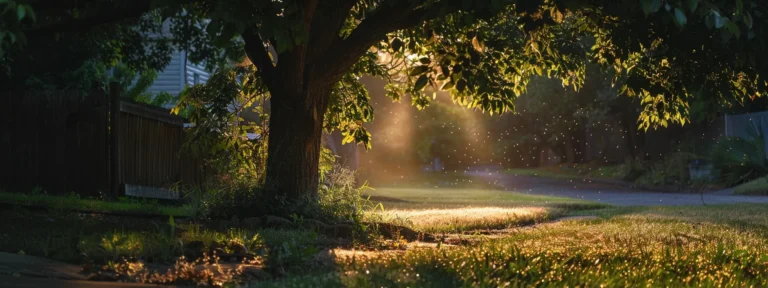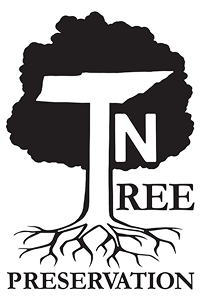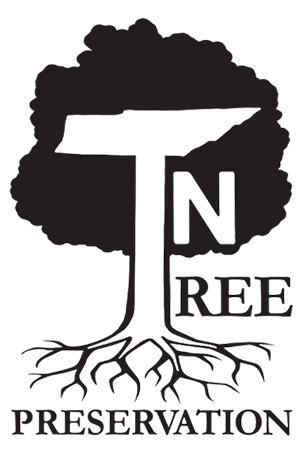Identifying and Treating Common Tree Problems in Middle Tennessee

Common Tree Problems in Middle Tennessee: Identification & Solutions
Middle Tennessee’s diverse tree population faces numerous challenges that can affect health, appearance, and longevity. From disease and pests to environmental stressors, understanding the common problems affecting our region’s trees is essential for proper care and maintenance. This comprehensive guide will help you identify issues early and implement effective treatment strategies to protect your valuable trees.
Disease Identification and Treatment
Tree diseases can spread rapidly throughout Middle Tennessee, particularly during warm, humid conditions. Early identification and prompt treatment are critical for maintaining tree health and preventing spread to neighboring trees.
Oak Wilt and Other Fungal Diseases in Tennessee Trees
Oak Wilt is a devastating fungal disease that threatens oak trees throughout Middle Tennessee, particularly red oaks. This vascular disease blocks water movement within the tree, causing rapid decline and often death within a single season.
Symptoms of Oak Wilt include:
- Leaves turning bronze or brown, starting at the edges and moving inward
- Rapid leaf drop during summer months
- Wilting progression from top of the tree downward
- Visible fungal mats beneath the bark in advanced cases
To manage Oak Wilt:
- Avoid pruning oaks during spring and early summer when beetles that spread the disease are most active
- Immediately seal pruning cuts on oak trees
- Create root barriers between infected and healthy trees by trenching
- Remove infected trees completely if the disease is confirmed
Other common fungal diseases affecting Middle Tennessee trees include:
Anthracnose: This fungal infection affects many hardwoods, particularly dogwood, maple, and sycamore. Look for brown spots or blotches along leaf veins, premature leaf drop, and twig dieback. Treatment includes removing infected leaves, improving air circulation, and applying fungicides in early spring.
Powdery Mildew: Appearing as a white, powdery coating on leaves, this fungus commonly affects crapemyrtle, dogwood, and oak trees. While rarely fatal, it can weaken trees over time. Improve air circulation, avoid overhead watering, and apply fungicides for severe cases.
Cedar-Apple Rust: This disease requires both cedar and apple family trees to complete its life cycle. Orange gelatinous growths appear on cedar trees in spring, spreading spores to nearby apple, crabapple, or hawthorn trees. Control involves increasing distance between host trees or applying preventative fungicides.
Bacterial Leaf Scorch: Symptoms and Management
Bacterial Leaf Scorch (BLS) is a serious bacterial disease affecting many hardwood species in Middle Tennessee, particularly oak, elm, maple, and sycamore. This systemic disease is spread by insects that feed on tree sap and gradually reduces a tree’s ability to transport water.
Key symptoms include:
- Leaves with brown margins and yellow borders between brown and green tissue
- Scorched appearance progressing from leaf edges inward
- Symptoms appearing in late summer and early fall
- Progressive worsening each year, with affected branches dying back
Unlike leaf scorch caused by drought, BLS returns to the same branches year after year and gradually spreads throughout the tree. While no cure exists, management strategies include:
- Proper irrigation during dry periods to reduce stress
- Regular fertilization to maintain tree vigor
- Selective pruning of severely affected limbs
- Antibiotic trunk injections to temporarily suppress symptoms
- Planning for eventual replacement with resistant species
Early detection is crucial, as infected trees may survive for 5-10 years with proper care before declining to the point where removal becomes necessary.
Root Rot: Causes, Prevention, and Treatment
Root rot encompasses several fungal pathogens that attack tree root systems, compromising structural stability and nutrient uptake. Middle Tennessee’s clay soils, which can retain excessive moisture, create favorable conditions for root rot development.
Common signs of root rot include:
- Thinning canopy and undersized leaves
- Gradual decline in tree vigor
- Fungal growth at the tree base
- Soft, decaying roots when examined
- Leaning or unstable trees in advanced cases
Armillaria (also called shoestring root rot) and Phytophthora are the most common root rot pathogens in our region. Prevention is far more effective than treatment:
- Ensure proper drainage around trees by grading soil away from trunks
- Avoid overwatering, particularly in heavy clay soils
- Maintain a 2-3 inch layer of mulch around trees (keeping it away from trunks)
- Prevent mechanical damage to roots and trunk bases
- Choose resistant tree species for replacement plantings
For trees showing early symptoms, improving drainage, reducing irrigation, and applying appropriate fungicides may slow progression. However, trees with advanced root rot often require removal, particularly if structural stability is compromised.
Insect and Pest Infestations
Insect damage can range from cosmetic issues to fatal infestations. Understanding the common pests affecting Middle Tennessee trees allows for timely intervention.
Emerald Ash Borer: Identification and Control Methods
The Emerald Ash Borer (EAB) is an invasive beetle that has devastated ash tree populations across Tennessee since its detection in the state in 2010. This metallic green insect attacks all native ash species (Fraxinus) by laying eggs on the bark. The larvae then tunnel beneath the bark, disrupting the tree’s ability to transport water and nutrients.
Signs of EAB infestation include:
- D-shaped exit holes (approximately 1/8 inch wide) in the bark
- S-shaped feeding galleries beneath the bark
- Unusual woodpecker activity as birds feed on larvae
- Canopy dieback starting at the top of the tree
- Epicormic sprouting (water sprouts) from the trunk and main branches
- Splitting bark revealing larval galleries
Control options vary based on the value of the tree and level of infestation:
Preventative treatment: For high-value ash trees showing no symptoms, systemic insecticides applied as soil drenches, trunk injections, or bark sprays can provide protection. Treatment must begin before trees show more than 30% canopy decline.
Cultural practices: Maintaining tree vigor through proper watering and fertilization can help trees resist light infestations.
Tree removal: For heavily infested trees, prompt removal and proper wood disposal prevents spread to healthy trees. Replanting with non-host species diversifies the landscape.
If you have ash trees on your property, regular inspection is critical. Consider preventative treatment for valuable specimens, as trees typically die within 3-5 years of initial infestation if left untreated.
Bark Beetles: Signs of Infestation and Treatment Options
Several species of bark beetles attack stressed or weakened trees in Middle Tennessee, particularly pines and occasionally hardwoods. These small insects bore through the outer bark to lay eggs, with the resulting larvae feeding on the critical cambium layer.
Common indications of bark beetle activity:
- Small, round exit holes in the bark (1/16 to 1/8 inch in diameter)
- Sawdust-like frass (insect excrement) in bark crevices or at the tree base
- Pitch tubes (small masses of resin) on pine tree trunks
- Fading foliage, progressing from green to yellow to red
- Peeling bark in advanced infestations revealing winding galleries
The Southern Pine Beetle, Ips Beetle, and Black Turpentine Beetle are the most problematic species in our region. Management approaches include:
Prevention: Maintaining tree vigor through proper watering during drought periods and avoiding mechanical injuries reduces susceptibility.
Monitoring: Regular inspection allows early detection when control is still possible.
Chemical control: Insecticide applications can protect high-value trees, but must be applied before infestation or at the earliest signs.
Removal: Prompt removal and proper disposal of infested trees prevents spread to neighboring trees.
For pine stands, maintaining appropriate spacing through thinning reduces competition for resources and increases resistance to beetle attacks. Commercial repellents containing pheromones can also help protect high-value trees.
Tent Caterpillars and Webworms: Protecting Your Trees
Eastern Tent Caterpillars and Fall Webworms create unsightly webs in trees throughout Middle Tennessee. While rarely fatal to established trees, heavy infestations can cause significant defoliation and stress.
Eastern Tent Caterpillars:
- Form silken tents in tree crotches, primarily on cherry, apple, and crabapple trees
- Emerge in early spring, coinciding with leaf budbreak
- Leave their tents to feed on leaves, returning for protection
- Complete their life cycle by early summer
Fall Webworms:
- Create webs that enclose leaves at branch ends
- Appear from late summer through fall
- Feed within their protective webs
- Affect a wide variety of hardwood trees
Control methods include:
Manual removal: For small infestations, pruning out and destroying webbing and caterpillars can be effective.
Biological control: Bacillus thuringiensis (Bt), a natural bacteria that affects only caterpillars, can be applied to foliage.
Chemical options: Insecticides containing carbaryl, malathion, or bifenthrin provide control when applied according to label directions.
Natural predators: Birds, wasps, and some beneficial insects help control populations; avoid broad-spectrum insecticides that harm these natural enemies.
While the webs are unsightly, healthy trees typically recover from defoliation without long-term damage. However, repeated severe infestations over multiple years can weaken trees and make them susceptible to other problems.
Environmental Stress Factors in Middle Tennessee
Environmental stressors often predispose trees to insect and disease problems. Understanding and addressing these factors is essential for maintaining tree health.
Drought Stress: Symptoms and Recovery Techniques
Middle Tennessee’s climate brings periodic drought conditions that significantly impact tree health. Trees suffering from inadequate moisture display distinctive symptoms and require special care to recover.
Signs of drought stress include:
- Wilting or curling leaves
- Premature leaf drop or fall coloration
- Marginal leaf scorch (browning along leaf edges)
- Reduced growth with shorter twig elongation
- Dieback of outer branches, particularly in the upper canopy
- Increased susceptibility to insect pests and diseases
Young trees (planted within 2-3 years) and shallow-rooted species like dogwood, maple, and river birch are particularly vulnerable. To help trees recover from drought:
Proper watering techniques:
- Water deeply and infrequently rather than frequently with small amounts
- Apply water slowly to allow penetration to the root zone
- Focus on the critical root zone (from trunk to drip line)
- Use soaker hoses or drip irrigation to minimize water waste
- Water during early morning hours to reduce evaporation
Mulching benefits:
- Apply 2-3 inches of organic mulch over the root zone
- Extend mulch to the drip line when possible
- Keep mulch pulled back several inches from the trunk
- Replenish mulch annually as it decomposes
Recovery care:
- Avoid fertilization during active drought, which can stimulate growth that the tree cannot support
- After drought breaks, apply a slow-release, low-nitrogen fertilizer to support recovery
- Monitor for secondary pest problems that might attack weakened trees
- Prune only dead or damaged branches until the tree shows signs of recovery
Remember that large trees may require 10+ gallons of water per inch of trunk diameter during severe drought conditions. The investment in proper irrigation helps prevent more costly tree replacement.
Storm Damage Assessment and Repair
Middle Tennessee experiences severe weather throughout the year, from ice storms to thunderstorms with high winds and occasional tornadoes. After storm damage occurs, proper assessment and repair are critical for tree recovery.
Assessing storm damage:
- Safety first: Check for downed power lines or hanging branches before approaching damaged trees
- Evaluate the extent of damage: Minor (less than 25% of crown), moderate (25-50%), or severe (over 50%)
- Look for structural damage, including split trunks, broken major limbs, or leaning trees
- Assess whether the main trunk and primary branches remain intact
Repair techniques:
- Clean cuts: Properly prune broken branches back to the branch collar or to appropriate lateral branches that are at least 1/3 the diameter of the removed limb
- Wound treatment: Research shows that wound dressings or paints are unnecessary and can actually slow healing; allow proper pruning cuts to heal naturally
- Cabling and bracing: For valuable trees with split trunks or major limbs, professional installation of cables or bracing rods can provide structural support
- Straightening: Young trees that are leaning but have adequate root systems can sometimes be staked and straightened if done promptly
Recovery care:
- Maintain adequate soil moisture to reduce stress during the recovery period
- Apply a 2-3 inch layer of mulch to conserve moisture and regulate soil temperature
- Monitor for signs of secondary infections or pest problems
- Avoid fertilization immediately following damage; wait until the following growing season
Most structurally sound trees can recover from storm damage with proper pruning and aftercare. However, trees with severe trunk damage, significant root loss, or more than 50% crown loss may not be salvageable and could become hazardous as they decline.
Soil Compaction and Root Problems
Soil compaction is one of the most common but overlooked causes of tree decline in Middle Tennessee, particularly in urban and suburban environments. Construction activities, vehicular traffic, and even foot traffic can compress soil particles, reducing oxygen availability to tree roots.
Symptoms of soil compaction include:
- Thinning canopy and undersized leaves
- Premature fall color and leaf drop
- Surface roots becoming more prominent
- Poor growth and reduced vigor
- Standing water after rainfall
- Soil that feels hard and difficult to penetrate
To address existing compaction:
Vertical mulching:
- Drill 2-inch diameter holes 12-18 inches deep throughout the root zone
- Space holes about 2 feet apart in a grid pattern
- Fill holes with equal parts compost, sand, and loam soil
- Top with a 2-3 inch layer of organic mulch
Air spading:
- A professional technique using compressed air to loosen soil without damaging roots
- Allows incorporation of organic matter into compacted soil
- Particularly effective for valuable specimen trees
Core aeration:
- Removes small soil plugs, creating channels for air, water, and nutrient movement
- Can be performed with mechanical aerators in lawn areas near trees
- Most effective when performed annually or biannually
Root invigoration:
- Combines air spading with compost incorporation and radial trenching
- Requires professional equipment and expertise
- Provides comprehensive treatment for severely compacted sites
Prevention is the best approach—establish protection zones around trees during construction, create mulch beds to eliminate turf competition, and designate pathways to channel foot traffic away from critical root zones.
When to Call a Professional Arborist
While many tree problems can be managed by homeowners, certain situations require professional expertise to ensure safety and proper care.
Signs of Hazardous Trees in Your Landscape
Trees that develop structural defects or health issues can become hazardous, posing risks to people and property. Identifying potential hazards early allows for intervention before failures occur.
Warning signs that indicate professional assessment is needed:
Root problems:
- Visible root decay or fungal growth near the base
- Heaving soil or lifted sidewalks around the tree
- Severed or damaged roots from construction activities
- Leaning trees, particularly those that have recently changed angle
Trunk issues:
- Cracks extending deeply into or through the trunk
- Multiple trunks with weak attachment points and included bark
- Cavities or decay affecting more than 1/3 of the trunk diameter
- Cankers or dead areas covering significant portions of the trunk
Branch concerns:
- Large dead branches, especially over targets like homes or play areas
- Branches attached with narrow, V-shaped crotches
- Multiple branches arising from the same point on the trunk
- Cracked or split branches, particularly after storms
Whole tree assessment:
- Recent leaning or ground lifting on one side
- Loss of major limbs creating imbalance
- Dead or declining trees of any size near targets
- Trees previously topped or improperly pruned
Professional arborists use specialized tools like resistance drills and sonic tomography to assess the extent of internal decay without causing additional damage. They can provide detailed hazard evaluations and recommend appropriate mitigation measures based on risk level.
Tree Removal vs. Preservation: Making the Right Choice
Deciding whether to remove or preserve a declining tree involves balancing several factors including safety, tree value, and potential for recovery.
Consider removal when:
- The tree poses an unacceptable risk that cannot be mitigated
- More than 50% of the tree is damaged or dead
- The tree has structural defects that cannot be corrected
- The tree is infected with a fatal, transmissible disease like Oak Wilt
- The tree is causing significant structural damage to foundations or utilities
- A better-suited species would provide greater benefits in the location
Preservation may be appropriate when:
- The tree has historic or exceptional value
- The damage is limited and can be addressed through pruning or cabling
- The tree provides significant benefits (shade, wildlife habitat, aesthetic value)
- Recovery is likely with proper treatment and time
- The risk posed can be managed through regular monitoring and maintenance
Preservation options that professionals might recommend include:
Reduction pruning: Decreasing the length of limbs and overall tree height to reduce wind sail and weight
Supplemental support systems: Installation of cables or braces to support weak unions
Lightning protection systems: For particularly valuable trees in exposed locations
Root zone enhancement: Vertical mulching, air spading, and soil amendments to improve root function
Treatment programs: Regular application of appropriate treatments for ongoing disease or pest management
An Arborist can provide an objective assessment of the tree’s condition and outline potential options with associated costs and benefits.
Finding Arborists in Middle Tennessee
Working with qualified professionals ensures proper tree care and reduces risks to people and property.
When selecting an arborist in Middle Tennessee:
Evaluate experience:
- Ask for references from similar projects
- Request a portfolio of previous work
- Inquire about experience with your specific tree species and problem
- Confirm years in business in the Middle Tennessee region
Obtain detailed proposals:
- Get written estimates from multiple companies
- Ensure proposals specify work to be done, techniques to be used, and cleanup procedures
- Confirm whether permits are required and who will obtain them
- Understand the timeline and any guarantees offered
Understanding the common problems affecting Middle Tennessee trees allows property owners to provide appropriate care and know when professional intervention is necessary. With proper knowledge and timely action, many tree issues can be successfully managed, prolonging the life and enhancing the beauty of our region’s treasured trees.


